Africa is the second-largest continent on Earth, so it comes as no surprise that it also has some of the most beautiful natural landscapes and an abundance of wildlife. However, despite being famed for its rich biodiversity and lush plant life, one thing often overlooked are the Types of african trees.
When people tell us stories of their trip to Africa, we always hear of those wild encounters with lions on a safari or the incredible views from Table Mountain, but nobody ever has anything to say about the trees.
Today we want to change things. In this blog, we have compiled a list of the most amazing and iconic trees Africa has to offer. If you love everything plant-related or simply want to learn more about Africa, you’ve come to the right place.
We will look at the characteristics of the African trees and take a look at any uses they may have.
Let’s dive straight into the list!
1. The Baobab Tree

Also known as the upside-down giant, the baobab tree is arguably the most iconic of the African trees. In fact, a lot of people claim that this unique tree is the most outlandish and iconic tree found anywhere in the world.
Though this tall species of tree can be found all over Africa, you are sure to spot one when traveling through Madagascar.
Referred to by some as the “Tree of Life”, the baobab is well-recognized thanks to its enormous water-storing trunk. The base of this tree can be so wide it can reach a diameter of 9 m. Reaching heights of 59 feet, the baobab tree is endangered.
However, that doesn’t stop many people from using the tree as a source of vitamin C in superfood beverages.
2. The Fever Tree
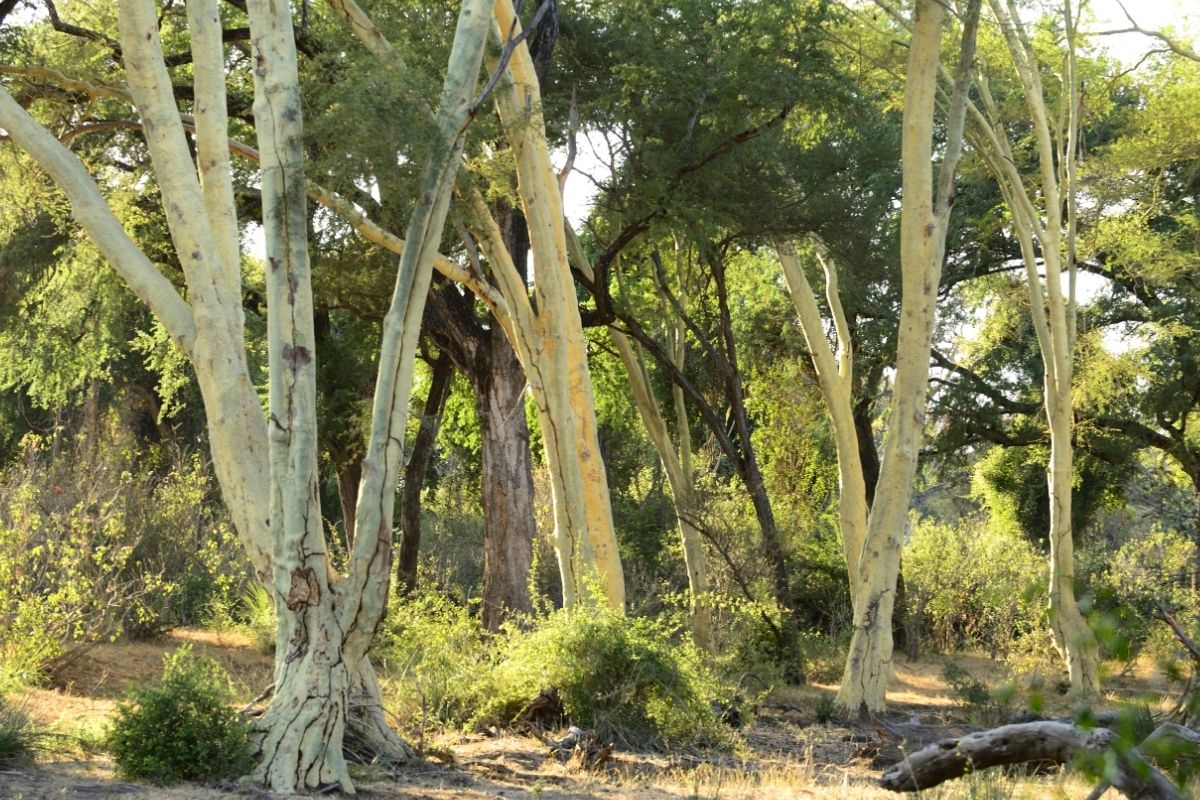
Interestingly, this tall African tree is one of the few trees in the world where photosynthesis occurs in the bark. As a result, this tree has a beautiful yellow and green coloration. The tree gets its name from its likelihood of growing in swampy landscapes.
Early settlers from Europe once blamed this tree for malarial fever that would commonly be contracted in and around the tree. Obviously, it was later discovered that this was in fact mosquito-related.
Standing tall with a spreading crown, the fever tree is loved by birds. So much so, many people across Africa and Australasia plant this tree in their gardens.
However, it is worth noting that it can also be considered a nuisance due to how fast they grow, quickly taking over other plant species.
3. Marula
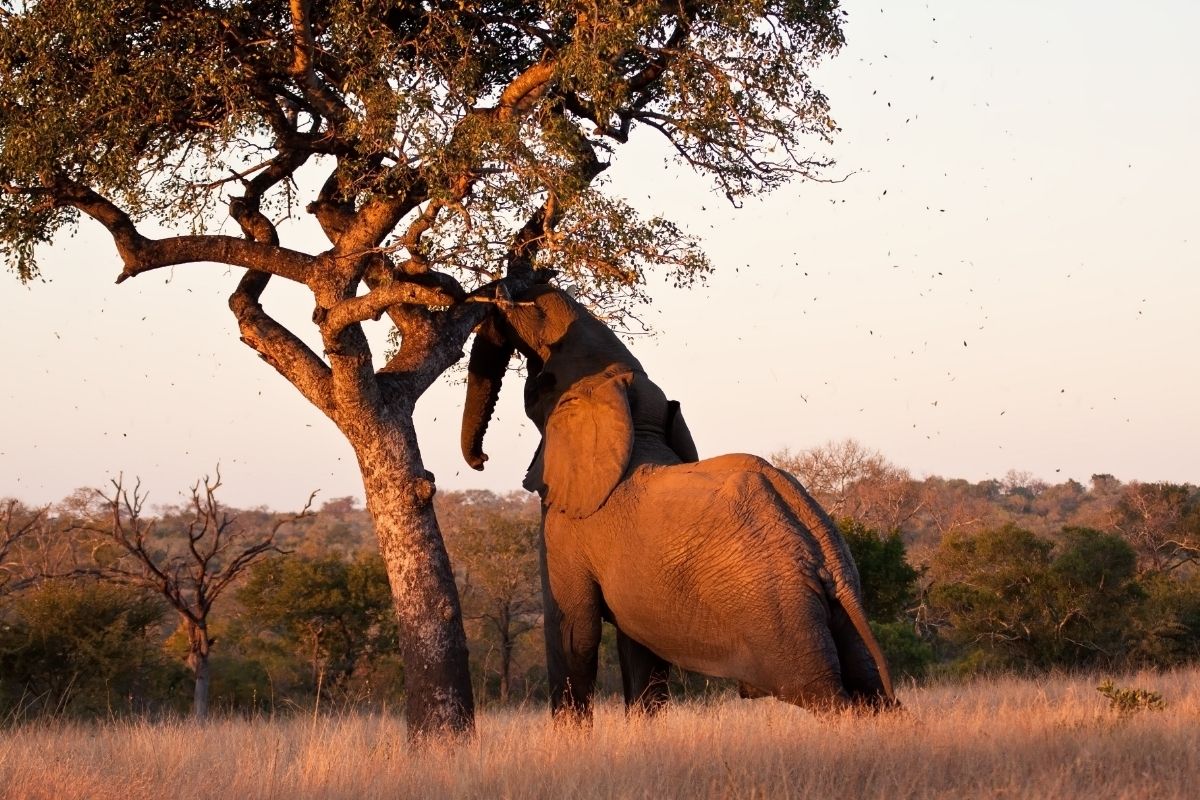
The seeds from the marula tree are edible, typically being used in cooking or as a substitute for coffee. The marula tree is a medium to large-sized deciduous tree with a thick erect trunk and beautifully rounded crown.
Found widespread across Africa, from Ethiopia in the north and KwaZulu-Natal in the South, the tree usually grows best in woodland with sandy soil.
The funniest story regarding the marula tree involves the African elephant. Elephants are tall enough to use their trunk to reach the fruit on these trees, but little do they know it gets them drunk.
The fermented fruits on the tree have the same effect a Friday night in the city has on us. Unfortunately for them, they don’t have a comfy bed to recover in the following day.
4. Quiver Tree

Growing up to 25 feet tall, the quiver tree is a slow-growing plant with smooth bark and greeny-gray leaves. In Afrikaans, the quiver tree is known as Kokerboom.
Sitting at the top of each hollow branch are clusters of sharp-pointed leaves that point towards the sky. This is in a part where the tree gets its name from. These leaves have the appearance of a quiver holding arrows.
Amazingly, the tree was also once used by indigenous bushmen to make quivers for their arrows.
Most commonly found in the Northern Cape, South Africa, this tree also has some medicinal value. The roots of the quiver tree can be used to treat tuberculosis and asthma.
5. Sausage Tree
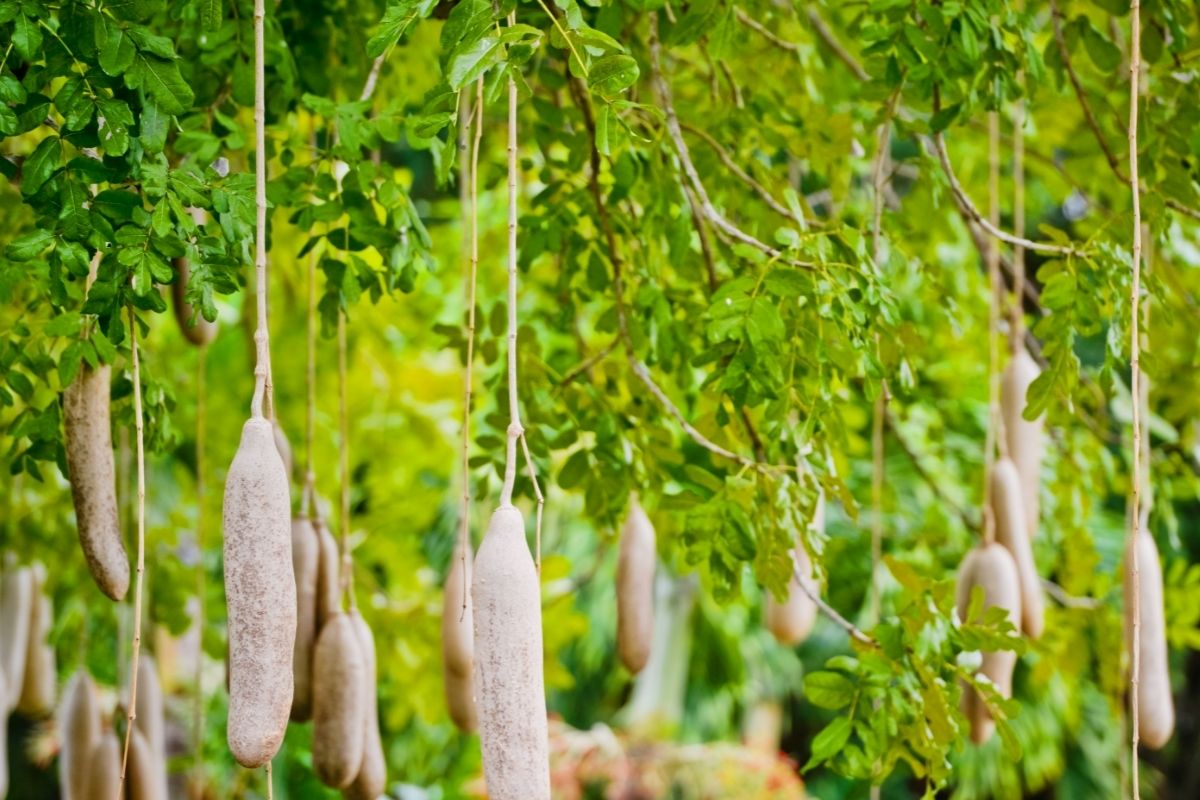
It may sound like a strange name for a tree, but once you’ve seen it, you’ll know exactly why it has the name it does. This quite normal-looking tree produces one of the most bizarre fruits.
Hanging from the thin vines on this tree are hefty sausage-shaped pieces of fruit. Weighing upwards of 10 kg, these fruits are quite honestly a danger to unaware walkers or parked cars.
The upside of these chunky sausage-like fruits is that they make a delicious traditional African brew and have a number of medical purposes. The tree itself grows up to 40 feet tall and is usually found further afield in Chad, Namibia, Senegal, and Eritrea.
6. The Leadwood Tree
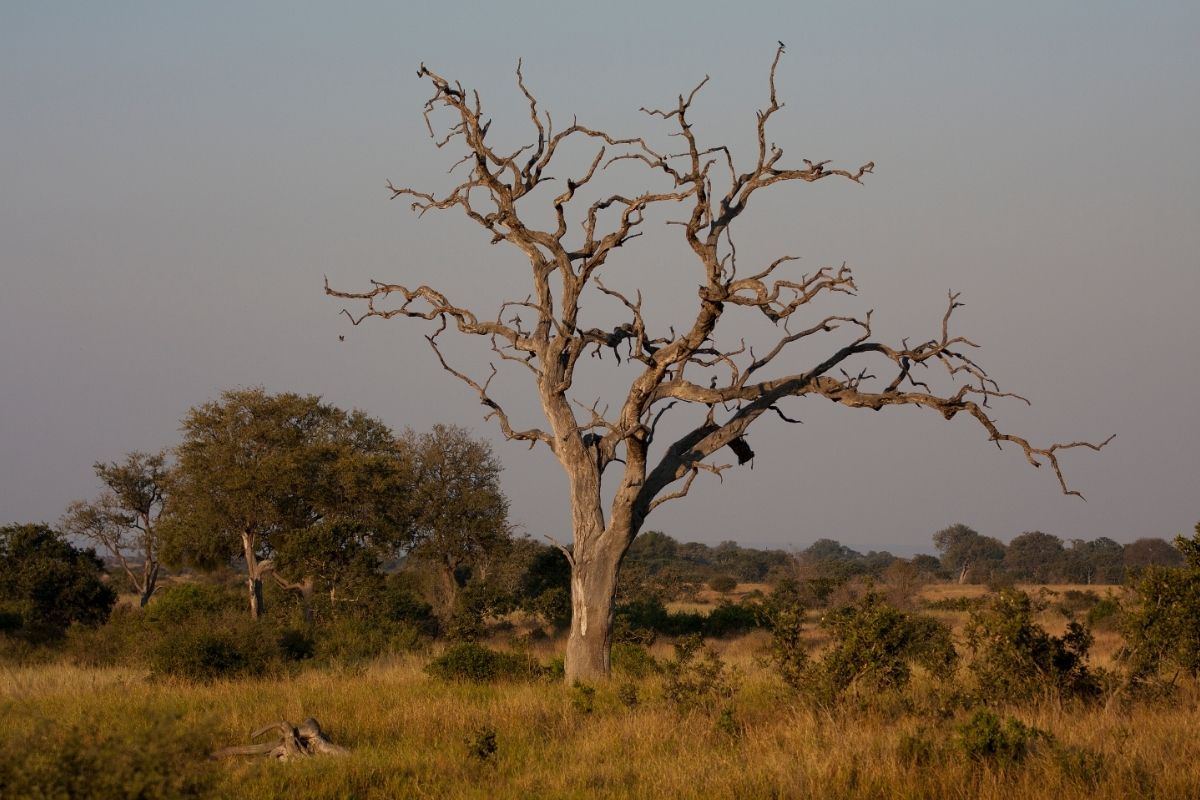
As you can probably tell from its name, the next list on our list of African trees comes from a strong and hardy species. The wood from this tree is so dense, it can’t actually float on water. This high density also makes the tree extremely resistant to termites.
This is why leadwood skeletons can be found dotted around the African landscape no matter where you are, long after the tree has died.
Considered to be one of the largest trees in Africa, the leadwood tree can grow to heights of 20 m+. When thriving, this semi-deciduous tree has a large spreading canopy and snakeskin-like bark.
It is believed that smoke from the burning flowers and leaves of this plant can be used to treat coughs, chest pains, and the flu.
7. Whistling Thorn

Thanks to the help of several ant species, the spiky appendages found on the whistling thorn turn into super cool natural whistles that really come alive when the wind blows.
That’s not all the ants do for this tree. In exchange for some sweet nectar and shelter, the ants will also protect the tree against herbivores. Unbelievably they can even protect the tree from the elephant.
Growing up to 6 m tall, the whistling thorn, also known by the scientific name vachellia drepanolobium, produces pairs of straight spines at each node, some of which have a much larger bulbous base.
8. The Yellowwood Tree
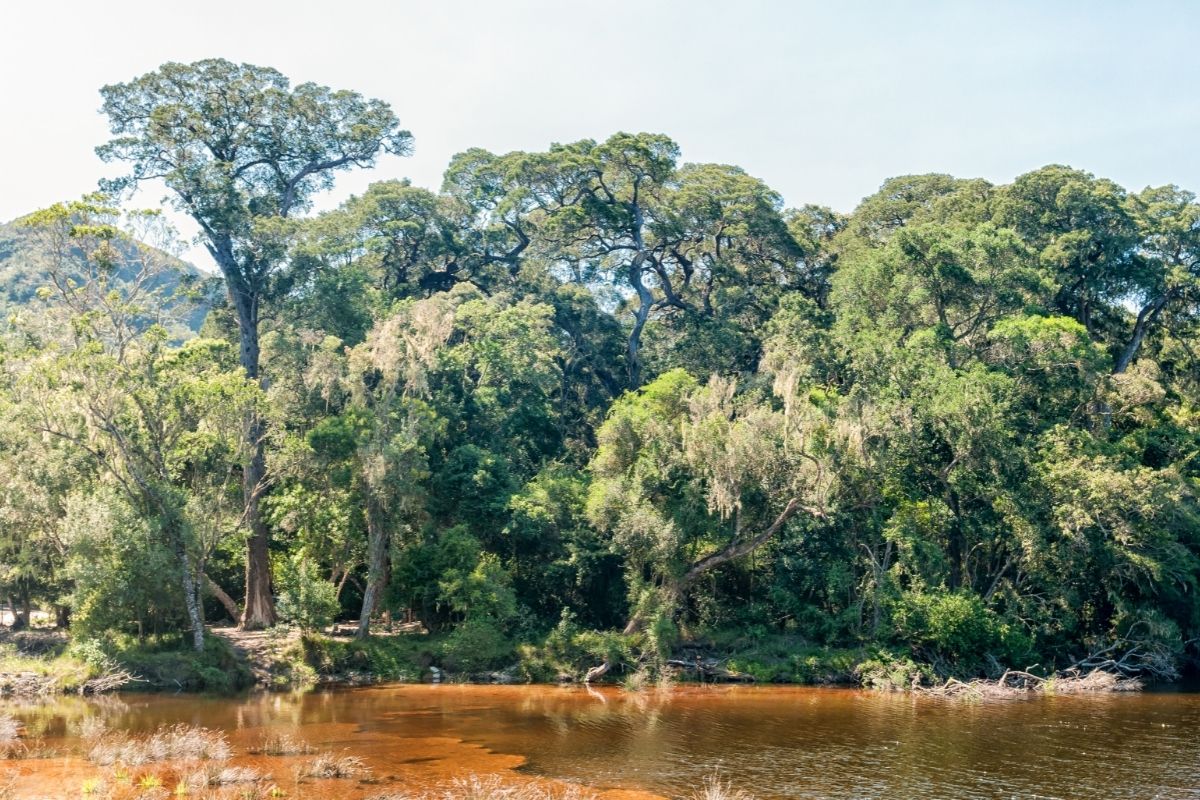
This large evergreen tree that can grow to 50 feet high is the national tree of South Africa. Found all over South Africa and at the top of Table Mountain, this iconic tree has smooth bark and large hanging clusters of delicate, fragrant white flowers.
In fall, these flowers turn a charming yellow color, adding more vibrancy to the landscape.
Along the Garden Route that can be found between the Western and Eastern Cape, yellow trees that date back 600 years ago can be found.
They can be found near Knysna and have an impressive diameter of 40 m. If you’re lucky enough you could even see these trees in Zimbabwe,
9. Acacia
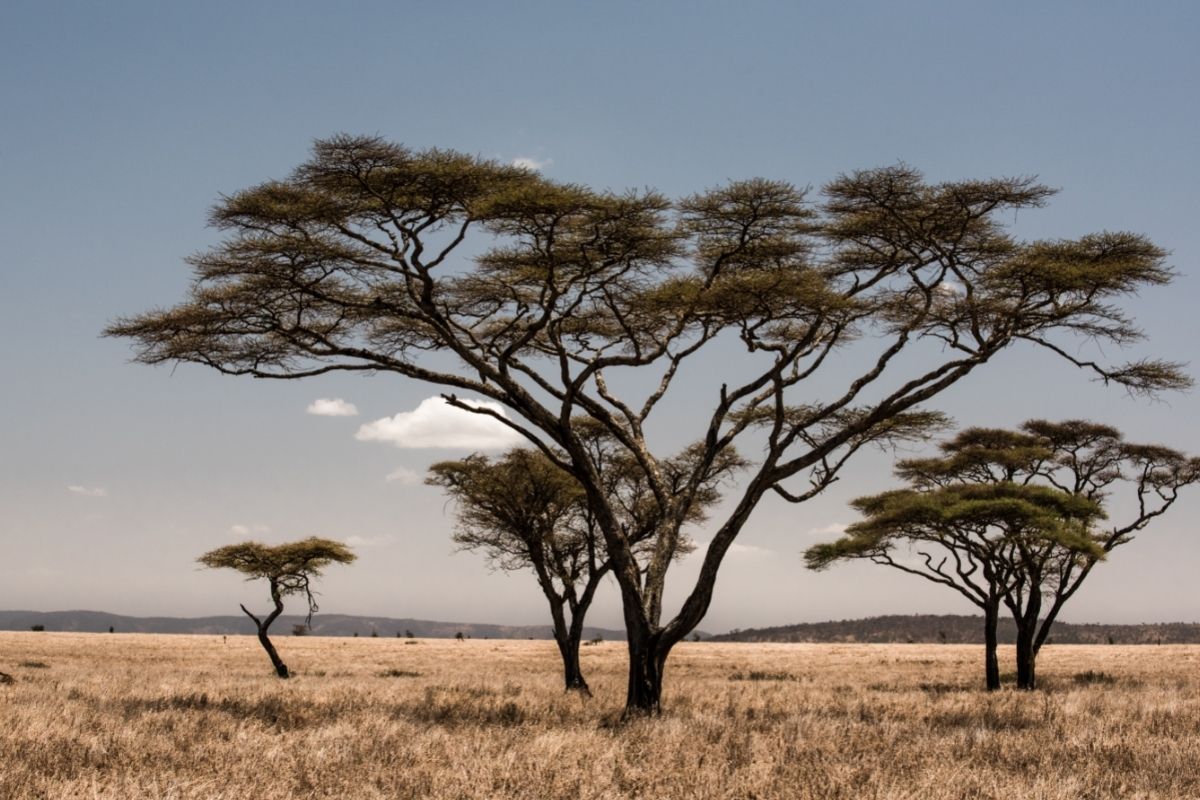
The acacia is one of the few trees on this list that can be found outside the African continent. There are approximately 28 different species of acacia found in Southern Africa with them typically being found in Niger, Nigeria, Kenya, Egypt, Ethiopia, and Senegal.
Despite being armed with sharp blackthorns, the acacia tree is a favorite snack for the giraffe. In terms of human usage, we use acacia trees to make gum and perfumes. This graceful tree usually has vibrant foliage green or blue in color.
Emerging from the dense foliage, creamy yellow and white blooms can be seen. The acacia is an evergreen tree, so we are treated to the tree’s beauty all year round.
10. Sycamore Fig
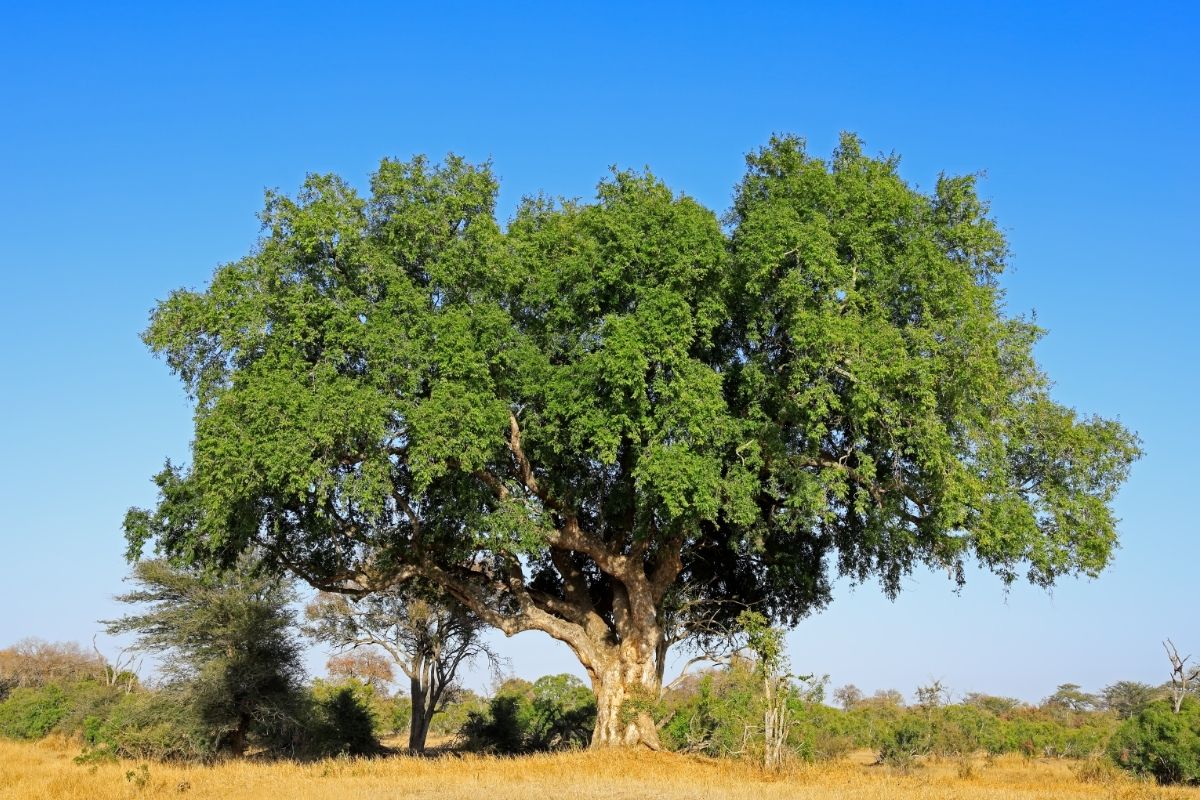
As far as famous trees go, it would be hard to beat the resume of the African sycamore fig. This bulky, yet charming semi-deciduous tree is mentioned several times in the Bible. That’s not all though.
The fruit, timber, and twigs from this tree have also been found in a number of ancient Egyptian tombs. The reason for this is that the sycamore tree is also believed to be the Tree of Life. This title seems fitting when you consider how much the tree offers.
Reaching heights of 35 m tall, the sycamore tree provides essential food to more animals than any other tree found in Africa.
As if that wasn’t enough, the marble-sized fruit that hangs from the tree acts as a home for some species of wasp that lay their eggs inside the figs.
Aside from providing animals with food and shelter and having great spiritual meaning, many people also eat the fruit from this tree.
Final Thoughts
There you have it, that is our list of African trees. How many do you recognize? Trees all over the world are special for different reasons but in Africa, they seem to be much more significant.
While almost every tree on this list adds natural beauty to the African landscape, there are certain trees on this list that are even more important.
Some are significant spiritually, while others have vital medicinal purposes. Some trees simply provide humans and animals with shelter during hot, dry days.
Now you’ve taken a look at the trees on our list, we hope you have a much better understanding of the type of trees you can expect to find in Africa. Some may be easier to spot than others and have more uses, but it is fair to say they all look incredible.
If you enjoyed our list, why not take a look at our other lists looking at trees from other parts of the world.
Editor’s Recommendations
10 Awesome Trees That Start With O (Including Pictures)







